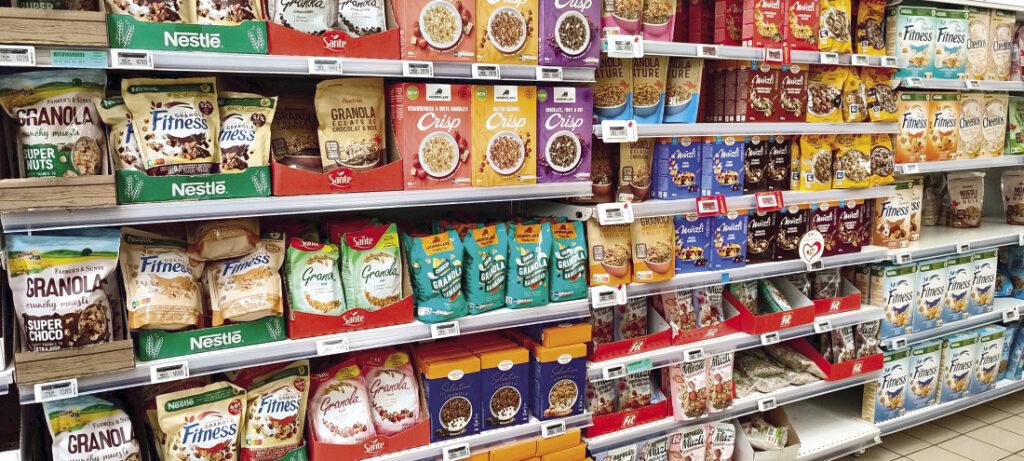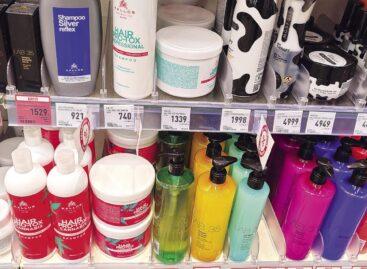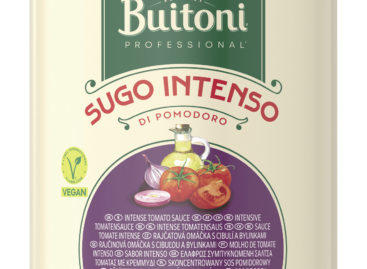Featherweights in the ring
Following a difficult year, most food categories can look forward to 2024 with justified optimism.
This article is available for reading in Trade magazin 2024/5
Pricing and promotion given main role
However, the changing economic situation, the weakening of the forint and further increases in commodity prices – especially for cereals and cocoa – could pose new challenges for the cereals market.

Viktória Márkus-Mangov
brand manager
Nestlé Hungária
“In sales the biggest challenge is increased prices and the accompanying bigger price-sensitivity”,
says Viktória Márkus-Mangov, brand manager of Nestlé Hungária Kft.

Tamás Bozó
sales manager
GOF Hungary
“With the new conditions and price- and value-sensitive consumers, manufacturers and retailers are forced to adapt their pricing, product strategy and promotions if they want to maintain or increase their market share”,
says Tamás Bozó, sales manager of GOF Hungary Kft.
In such a situation consumers may tend to switch to cheaper cereals with fewer ingredients, or go from premium or branded products to lower-priced brands or private label cereals.
Tamás Bozó believes producers and retailers can try price cuts, promotions or coupons to make their products more attractive to consumers. Another strategy is to focus on private label products.
New cereal flakes bring new opportunities
Cerbona’s experience is that certain products such as functional cereals and new listings have delivered results even in these difficult market conditions.

Anna Pókecz
marketing manager
Cerbona
“In the breakfast products category, customers are either consuming less or other types of products, so we have witnessed a bigger sales decline there. We haven’t seen a major change in the cereal bar category”,
says Anna Pókecz, marketing manager of Cerbona Élelmiszergyártó Zrt.
Viktória Márkus-Mangov, associate marketing manager of Nestlé:
“This year the planned new launches of Nestlé’s cereal business line could create opportunities for growth, so we are looking forward to the next few months”.
Two new cereal bars already hit the market last year: white chocolate and honey flavoured Fitness Cereal Bar with sweetener is high in fibre, while the chocolate covered cocoa flavoured Fitness Cereal Bar with sweetener is also an excellent source of protein. This April the new Nestlé Minis products, in the form of tiny balls, appear on store shelves.

Manufacturers and retailers must adapt to the changing market conditions in terms of pricing, product strategy and promotion, too
Building on the success segments
GOF Hungary Kft. is building on the recent success of granola and oat-based products. Demand for granola is expected to continue to grow, which is why the company is also looking to introduce new flavours, textures and formats. Oat-based products are becoming more and more popular, and they want to be a key player in this field in Hungary. The company came out with 3 gluten-free granola products at the end of last year, which are made from their own oats. In the future they will put more new products on the market, in the spirit of health, convenience and sustainability.

Success could be achieved amidst difficult market conditions with special functional cereals and new listings
Cerbona believes innovation is essential in this sector. Their granola products require a lot of development work, but they also have many product benefits that they have adapted to market needs. Manufacturers must keep up with the latest trends and consumer needs. Recently the company rolled out a cereal product especially for children, which is very successful. Cerbona focuses very much on online communication and their reach data indicates success.//
Cereals: declining volumes in every segment
According to the NIQ retail index, the market of cereal categories exceeded HUF 42bn in 2023. Compared to the previous 12 months, this represents a 24% sales increase. In terms of volume just over 14,000 tonnes were sold, which meant a 3.5% drop in sales.


Guest writer:
Katalin Séra
senior analyst
NielsenIQ
Cereal flakes: the category’s value was over HUF 18bn between January and December 2023, 25% more than in the previous period. However, there was a 3% drop in volume sales, with just over 9,000 tonnes consumed. Chocolate and cocoa products are the most popular, accounting for more than a third of the category.
Muesli: annual sales grew by 18%, with nearly HUF 7bn worth of products purchased. In volume the NIQ retail index registered an 8% sales decline. Chocolate products are also the most popular in this segment, followed by mixed fruit and strawberry flavours, but together they account for a third of the category in terms of value.
Sesame and muesli bars: value sales amounted to nearly HUF 18bn, a 25% hike compared to the previous period. As in the segments discussed above, there was a volume sales drop of almost 2%. Demand is the biggest for chocolate flavours, followed by strawberry and blueberry. //
Related news
From hair roots to hair volume
🎧 Hallgasd a cikket: Lejátszás Szünet Folytatás Leállítás Nyelv: Auto…
Read more >Buitoni Condensed Tomato Sauce with Onions
🎧 Hallgasd a cikket: Lejátszás Szünet Folytatás Leállítás Nyelv: Auto…
Read more >Price isn’t enough, promotions and re(in)novation are lifting the plane
🎧 Hallgasd a cikket: Lejátszás Szünet Folytatás Leállítás Nyelv: Auto…
Read more >Related news
New Year’s Eve: shortened opening hours in stores – general store closure on January 1
🎧 Hallgasd a cikket: Lejátszás Szünet Folytatás Leállítás Nyelv: Auto…
Read more >Tejföl is only a name for live flora: new categories for sour dairy products will be introduced from 2026
🎧 Hallgasd a cikket: Lejátszás Szünet Folytatás Leállítás Nyelv: Auto…
Read more >Sausage prices before New Year’s Eve: cheap entry, expensive premium – how big is the gap on the shelves?
🎧 Hallgasd a cikket: Lejátszás Szünet Folytatás Leállítás Nyelv: Auto…
Read more >






